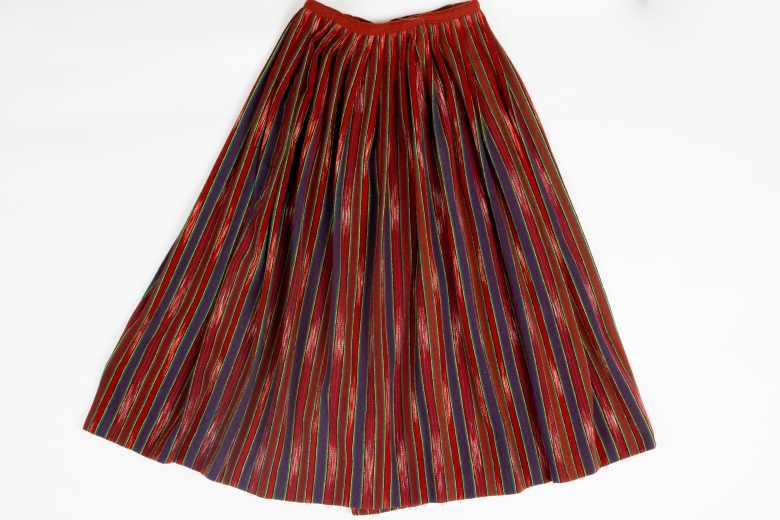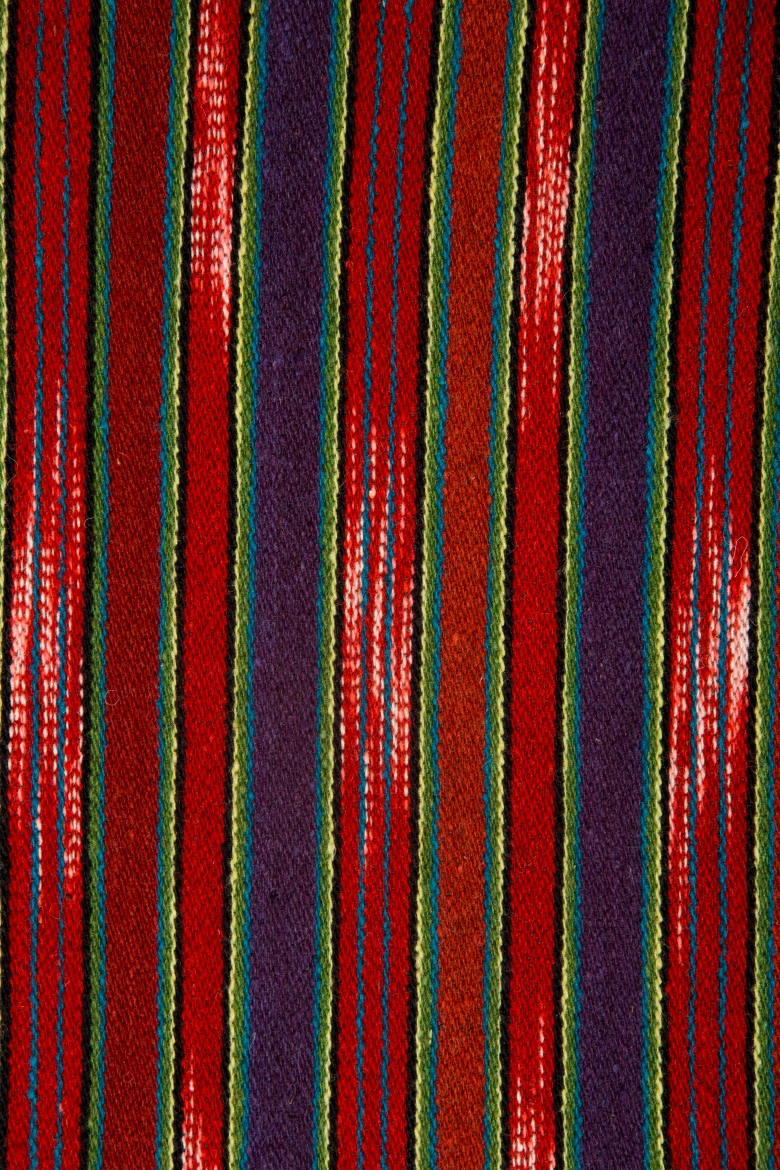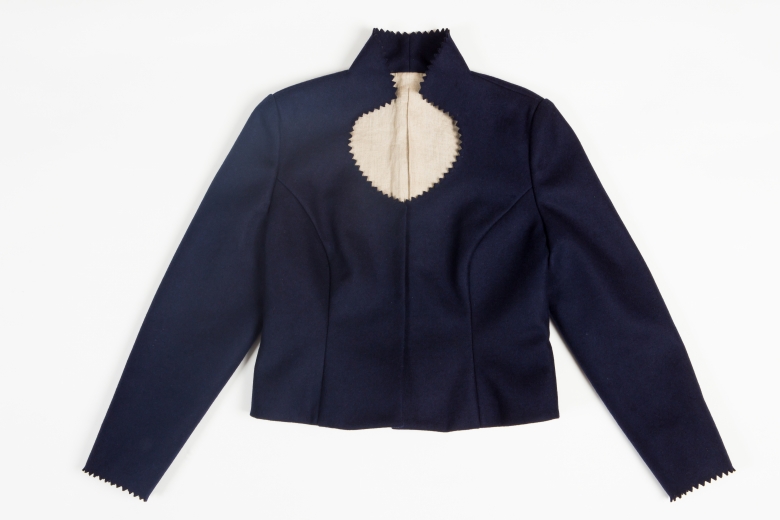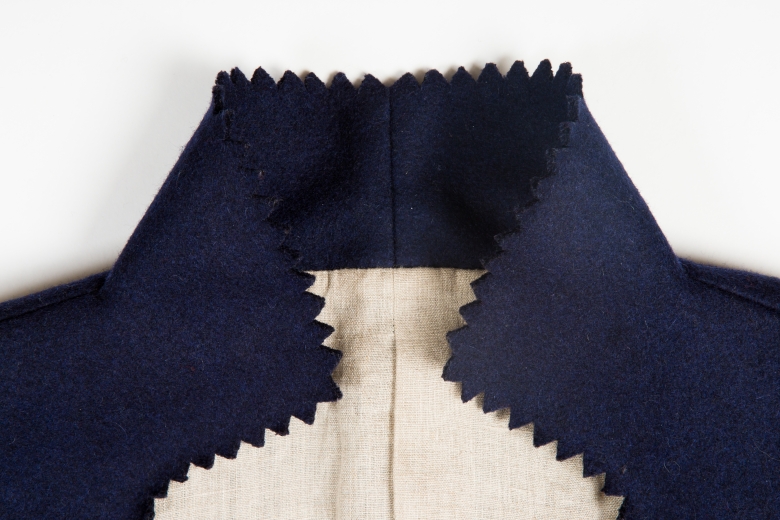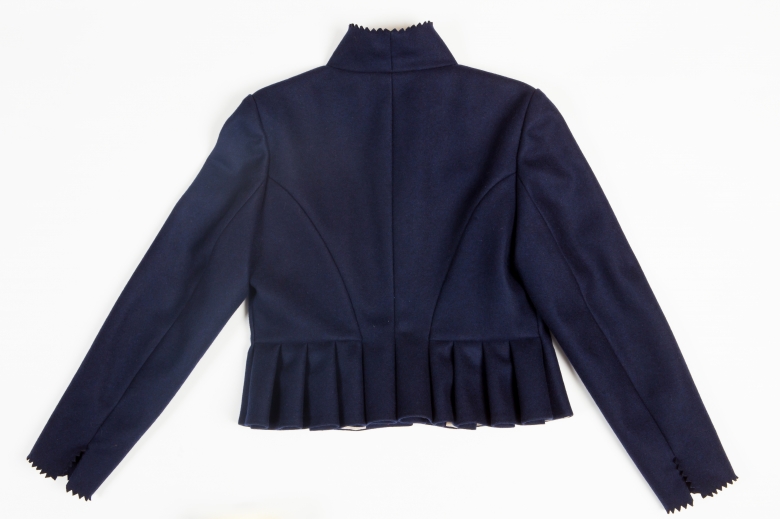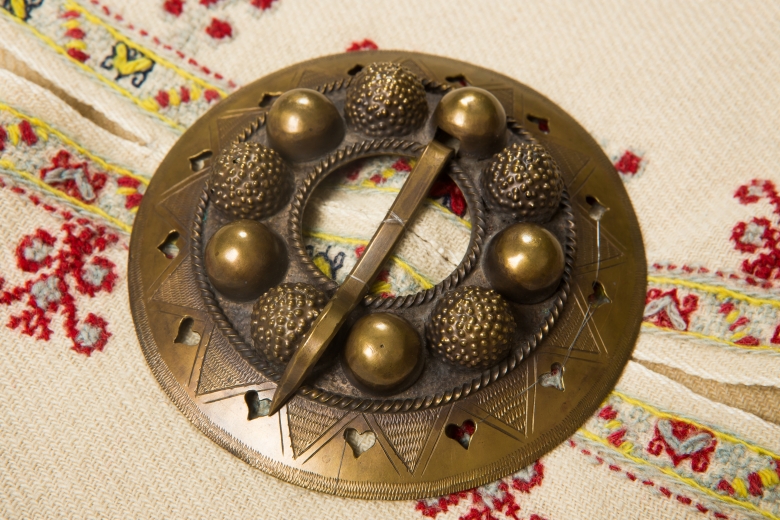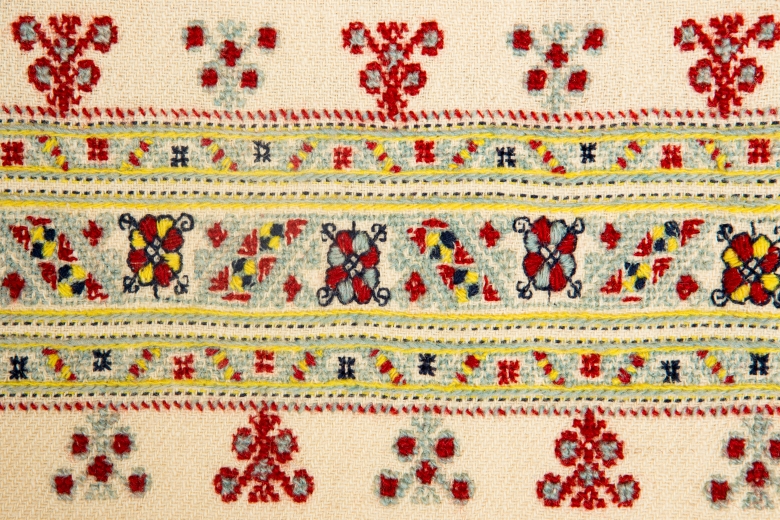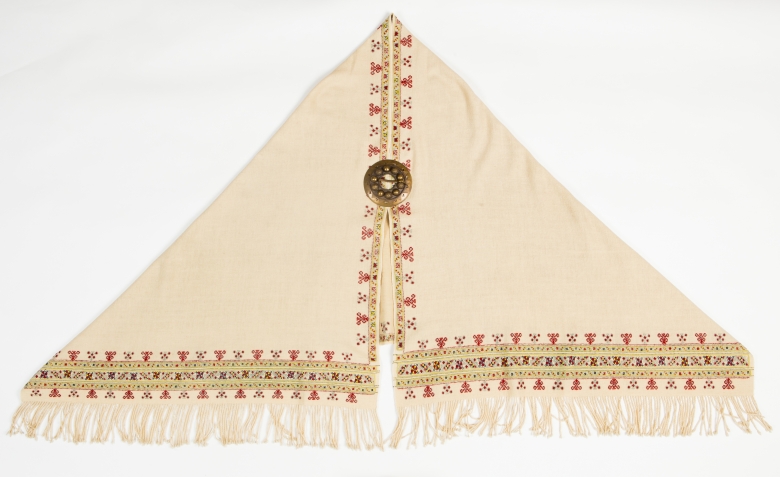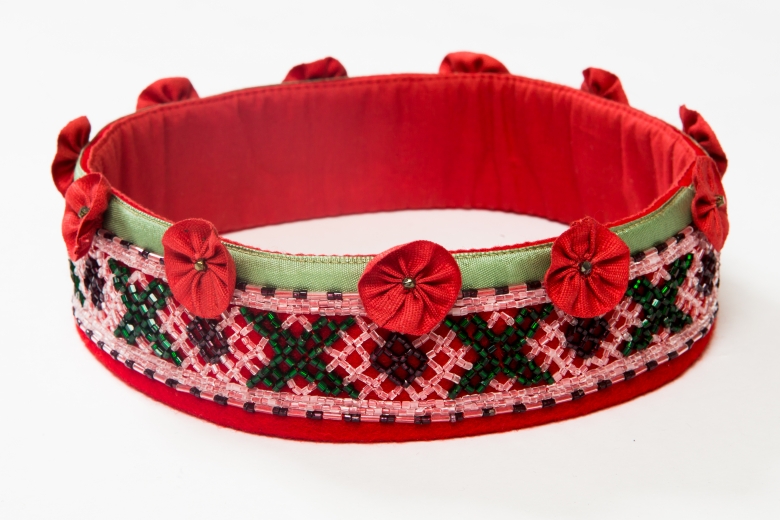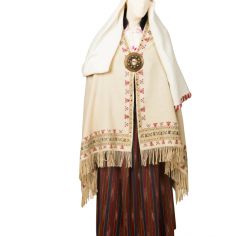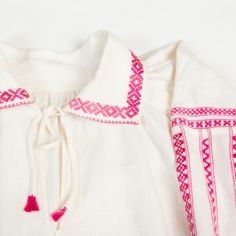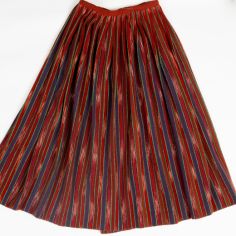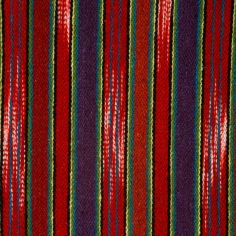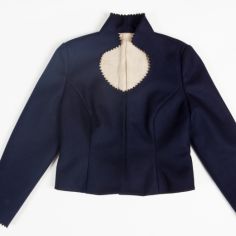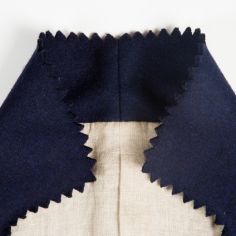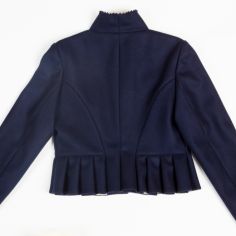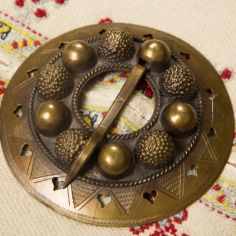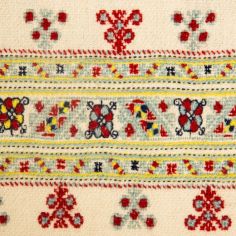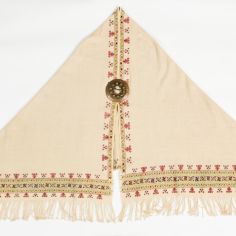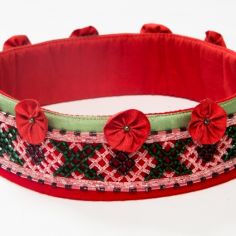Women’s Clothing from Augšzeme / Selonia
Brief information
- Shirt – cut straight, mid-calf length with red embroidery and either a turnover collar with white embroidery or a stand-up collar with multi-colour embroidery;
- Skirts – full, gathered skirts of striped or plaid fabric; alternatively, striped with ikat-dyed patterns;
- Belts – patterned or chevron striped belts;
- Jackets – dark blue with notched edging along the neckline and cuffs;
- Shawls – white with multi-coloured embroidery;
- Aprons – white with red embroidery;
-
Headdresses:
- an unmarried woman’s headdress was the crown-type vainags, made of red fabric, embroidered with glass seed beads;
- married women wore long linen headcloths with red embroidery at the ends;
- Legwear – knitted white socks;
- Jewellery – shawls were fastened with a large, silver bubble brooch (burbuļsakta), while the shirt was secured with a small to medium size silver annular brooch (sakta) or patterned fabric ribbon.
History and Origin
The women’s clothing from Augšzeme is characterized by a long, mid-calf linen shirt made of separate, rectangular fabric segments stitched at the shoulders or a tunic-type shirt where the front and back are made of one contiguous piece of fabric folded over at the shoulders. There are two types of shoulder constructions, one where the shoulder straps are on the inside of the shirt and another with them sewn on the outside over the shoulder seam or fold. These are also embroidered in different ways. The shirts with straps inside had multi-coloured embroidery on the collars and cuffs, while the shirts with straps outside had red and white embroidery on the foldover collar, the shoulder straps, and the sleeves. The shirt is fastened with a small to medium size silver annular brooch (sakta) or red and white patterned fabric ribbon.
The skirts are gathered, full skirts of striped, plaid or striped fabric with ikat-dyed patterns, which are obtained by ikat-dying the weft yarn prior to weaving. A range of colours may appear in the striped fabric while the arrangement of the stripes could also vary.
Belts are woven and similar to the Krustpils type. Alternatively, they may be woven with a single repeating motif or tablet-woven with chevron patterns.
Jackets are close-fitting, worn slightly below waist length, with a stand-up collar and a scoop neckline with a notched edging. In the central area around Jēkabpils, the Shawl was white wool, embellished with multi-colour yarn embroidery. It could also be constructed with tablet-woven borders and multi-coloured fringes. Woven linen shawls would have been worn in warmer months. The white Shawl was fastened with a silver bubble brooch (burbuļsakta), a type of disc brooch with relief-work ornamental elements arranged in a ring around the centre.
There were two types of unmarried women’s headdresses. One was a ten to eleven centimetre wide, fabric crown-type vainags, embroidered with glass bugle beads. The other was a narrower band embroidered with glass seed beads and satin ribbon trim along its upper edge.
In the area around Jēkabpils, the women’s headdress was a fine linen cap, while in the Ilūkste area a linen headcloth with red embroidery at the ends was worn. The headcloth in this district was worn wrapped around the head in a unique way.
Legwear: In the Jēkabpils area, the knitted socks were relatively short with patterns on the leg. Leg wraps were worn under the socks extending from the ankle to the knee. More recently white wool, linen or cotton knee-length socks, secured below the knee with a woven patterned band were worn.
Footwear consisted of flat, leather, lace-up shoes (pastalas) or closed, low-heeled black shoes, fastened with a cord or strap.


